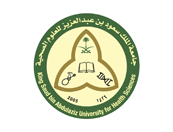Abstract
Purpose. The purpose of this study was to determine if students’ self-rating of suturing skills learned in a self-directed manner was concordant with physicians’ ratings.
Methods. Second year medical students were provided a video-based, self-directed curriculum, and a suture pad to use over eight weeks. Each student rated their performance of placing three simple interrupted sutures using a Global Rating Scale. Video recordings of the students’ performance were then assessed by three faculty using the same rating scale. The students’ self-assessments were compared to the average of faculty assessments to test for bias, correlation, and concordance.
Results. A total of 71 students participated in the study. Three faculty raters had strong agreement on total scores (intraclass correlation coefficient=0.91). No bias was evident between total performance scores based on student self-rating (25±6 on a 10–40-point scale) or the mean faculty ratings (26±6, p=0.353), but correlation between faculty and student total ratings was low (r=0.26).
Conclusion. Students’ self-ratings were weakly correlated with faculty ratings, and were without evidence of systemic bias, suggesting the presence of both under- and over-estimation of suturing skill during self-assessment. Self-directed instruction and practice should be accompanied by faculty-guided practice and feedback.
Recommended Citation
Srinivas, Divya; Gilbird, Rebecca; Bennett, Jennifer; Bilgrami, Mehdi; Pankey, Samuel; Tumin, Dmitry; and Robey, Walter
(2025)
"Using a Self-Directed Learning Technique for Learning Suturing Skills: Does Medical Student Self-Assessment Agree with that of Faculty Observers?,"
Health Professions Education: Vol. 11:
Iss.
3, Article 13.
DOI: 10.55890/2452-3011.1354
Available at:
https://hpe.researchcommons.org/journal/vol11/iss3/13



